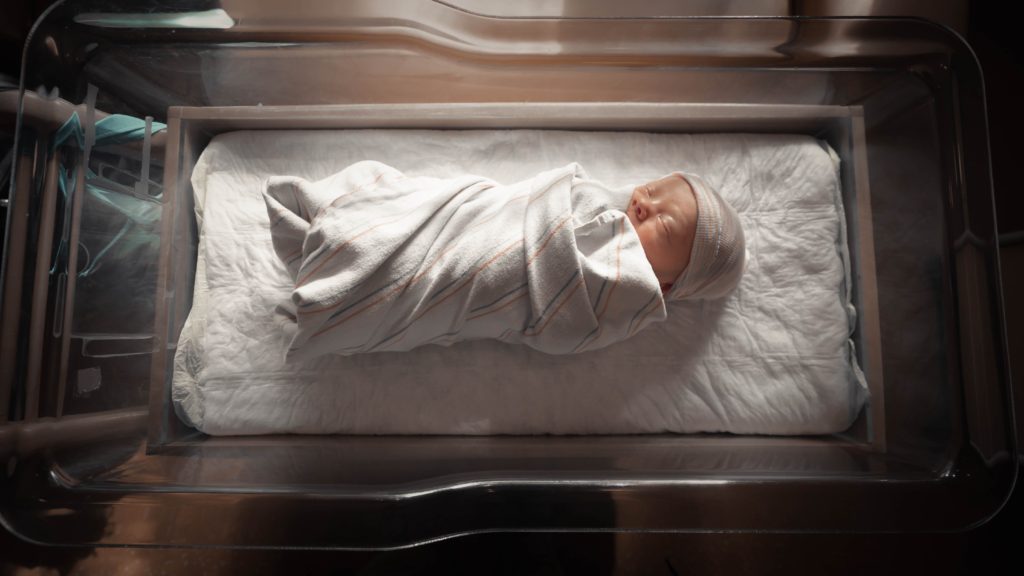Do you find yourself asking: what happens after the baby is born? This post will answer all of your questions about what happens to your newborn and yourself after birth in a hospital.
So your baby is born! Yay! Your baby is a perfect, gorgeous bundle of joy!
And…now what?!
How long will I be here? What am I allowed to do? What will the nurse do for the baby, and what should I be doing? EVERYTHING IS OVERWHELMING!!
I’m here to guide you. It’s not as scary as it may seem!
I’m a labor nurse and a mom to three little girls. I will share with you my experiences as both a nurse and a patient!
Keep in mind, every hospital and region has different policies and protocols, so this is just a rough outline of what you can expect. Certain tests or medications may be mandated by law to keep you and your infant safe, so keep that in mind if your experience strays from what’s listed.
Remember: you can always call your labor and delivery unit or ask your provider if you have any questions.
This article is meant for entertainment purposes only, and is not medical advice. The opinions expressed in this article are not reflective of any institution I am affiliated with. Please consult your providers with any questions or concerns; this is not intended to replace any medical advice. Please see my disclaimers for more information. This post contains affiliate links for your convenience. If a purchase is made using the links on this post, I may earn a small commission at no additional cost to you.
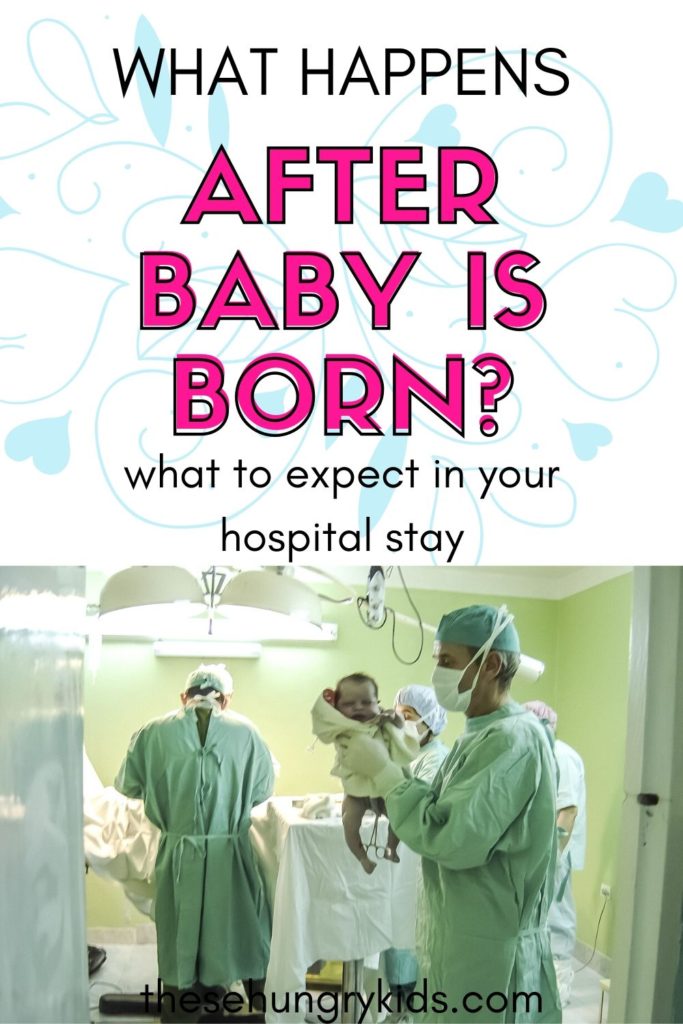
How long you’ll be in the hospital after you have a baby
In a straightforward, uncomplicated vaginal birth, the length of stay is between 24-48 hours. For a C-section, you can expect to stay between 3-4 days.
There are many factors that can affect the length of stay such as:
- How much bleeding there was after delivery
- If there severe vaginal tears
- Any c-section complications
- Blood pressure issues, especially with pre-eclampsia requiring magnesium
- Any complications related to pregnancy or delivery
Occasionally, babies need extra help on the outside and may need to spend time in the neonatal intensive care unit (NICU) or special care nursery (SCN). There are many factors that will affect their length of stay, including (but not limited to):
- Gestational age
- Vital signs (respiratory/breathing rate, heart rate, oxygen saturation, temperature)
- Blood glucose levels
- Need for fluids, antibiotics, or oxygen
What to Expect for Your Baby After Birth
Immediately after birth:
Hello, little one! Welcome to the world!
If you would like, you can ask your provider to place baby right up on your chest after delivery. As long as baby looks good, they can stay there! You should try and get a good hour of skin to skin with your baby.
This is not only great if you’re breastfeeding by stimulating the milk supply, but will release bonding hormones and oxytocin to make your uterus clamp down and stop bleeding.
You may also wish to request delayed cord clamping. It is really becoming a standard of care that if baby and mom are OK, the cord should not be clamped until it stops pulsing.
After the cord is done pulsing, there is no benefit to leaving it attached – there is no blood flow at that point. It usually stops pulsing 2-3 minutes after birth. Keep in mind, this may not be possible in an emergency situation.

The Golden Hour
The Golden Hour is the first hour after baby is born. It is a wonderful time to bond and snuggle your baby. Breastfeeding may be initiated and skin-to-skin is encouraged.
After that first hour, your nurse will likely take the baby to a warmer in your room to:
- Check vital signs (heart rate, breathing rate, temperature, oxygen saturation)
- Give the baby a good head to toe assessment
- Give the baby any medications
- Many states mandate vitamin K and erythromycin ointment (NY is one of those states!)
- Vitamin K helps prevent brain hemorrhage by promoting clotting
- Erythromycin ointment goes into the baby’s eyes to prevent against bacteria in the birth canal that may cause blindness or other eye issues
- You may choose to start the hepatitis B vaccine series
- Many states mandate vitamin K and erythromycin ointment (NY is one of those states!)
- Weigh and measure the baby
- Collect footprints
- Check blood sugar, if needed (if mom is diabetic, baby is large for gestational age or small for gestational age, or if baby appears symptomatic of low blood sugar)
I always encourage the support person to take pictures during this first hour. It’s nice to look back on! Especially when the baby is on the scale…great photo opp!
The First Feeding
Babies should eat ideally within the first hour of life, but definitely within the first two. It’s normal for babies to not be interested right away.
Pay close attention for any rooting (turning of the head with mouth open, looking for a nipple), lip smacking, or sucking on hands. Crying is a late sign of hunger, you want to start this first feeding before they are starving!
If you are breastfeeding, remember: this baby has NEVER breastfed before.
Café Placenta JUST closed, and that stinks because your babe never had to work for food before. Now they have to give effort, and that’s confusing. It’s normal for them to pop on and off the breast for a while until they get a taste for your sweet colostrum and remember what they are working for!
If you are formula feeding: take what the hospital will provide for you! You can use your own expensive formula later. Babies really only need a few milliliters of milk at a time because their stomachs are SO LITTLE!
So, to summarize the immediate postpartum period for baby:
- Skin to skin
- First feeding
- Frequent assessments by nursing staff and/or pediatrician
- Baby’s first medications
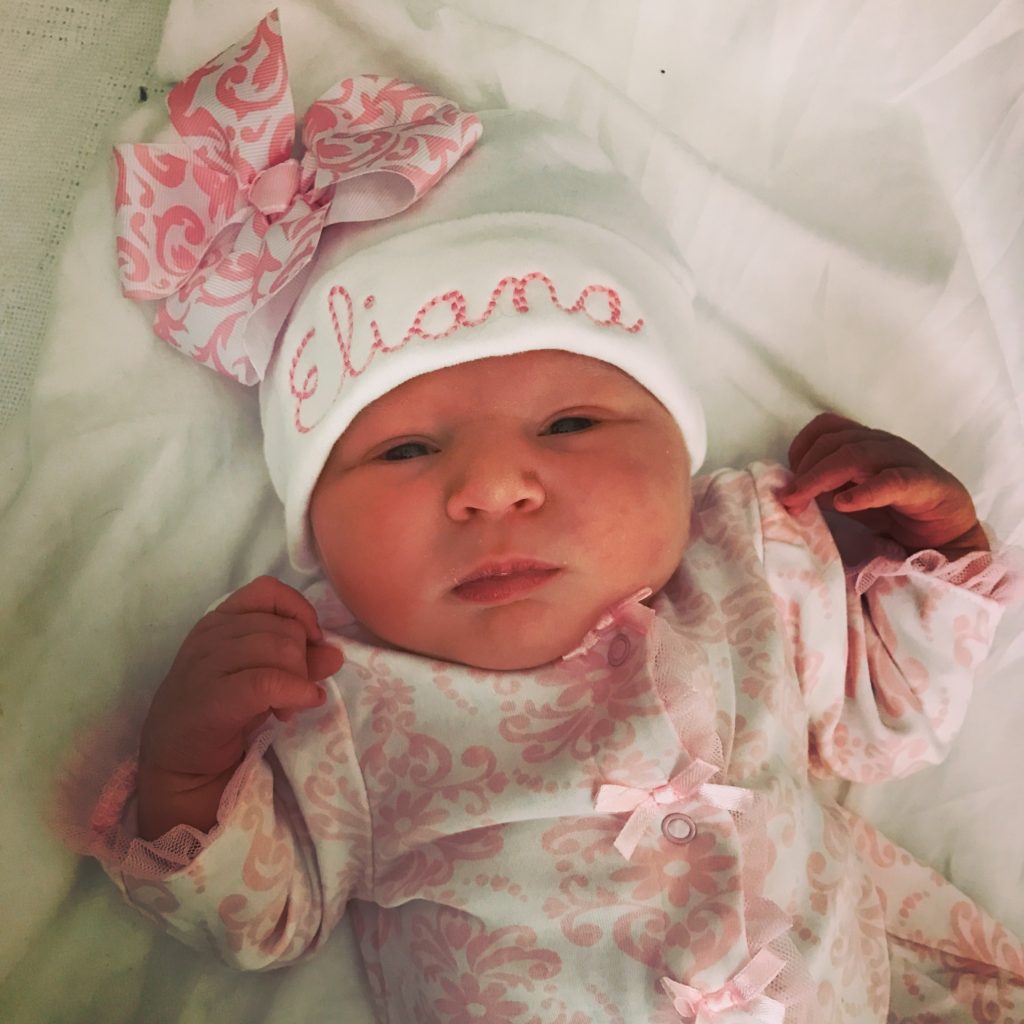
Starting the postpartum recovery
Most hospitals in the United States recommend rooming in vs. going to the nursery. This means unless your baby needs to go to the NICU or Special Care Nursery, they will be with you in the room!
In fact, many hospitals have done away with their nurseries, or only offer nursery stays for babies for a few hours at a time. Baby will have their own bassinet, where they will sleep and lay when they are not being held.
There is typically a pull out bed for one additional person to stay, as well as a hospital bed for mom.
If you have other kids at home, I would recommend not having them stay overnight in the hospital. The nurse will be coming to check on you and baby often, and the baby will be up every few hours to eat. It just makes for a lot more drama. You should check with your hospital to see their policies about this if that is your plan.
What to expect for baby within the first 12-24 hours
- The first bath
- A visit from a lactation team if breastfeeding
- Feedings every 2-3 hours
- Frequent diaper changes as the baby clears meconium (I recommend changing diapers with each feeding, unless they are soiled in between)
- Vital signs performed by the nurse
- Metabolic disorders screening (a heel prick)
- Bilirubin test (assess for jaundice)
- A visit from the pediatrician
What to expect for baby within the first 24-48 hours:
- Circumcision, if requested
- Hearing test
- Feedings every 2-3 hours
- Frequent diaper changes as the baby clears meconium (I recommend changing diapers with each feeding, unless they are soiled in between)
- Vital signs performed by the nurse
Most of baby’s care is completed within the first 48 hours. Occasionally babies need extra monitoring for bilirubin levels, glucose levels, or to monitor vital signs.
What to Expect for Mom after a Vaginal Delivery
If you are planning for a c-section, keep scrolling!
Immediate postpartum
Yay! You did it! You pushed that baby out like a CHAMP and you should be so proud.
After the baby is delivered, you will have to deliver the placenta.
That placenta typically comes out 10-20 minutes after the baby is born. Don’t worry, it’s nothing like giving birth!
Placentas have no bones (thank goodness) so you may just have to give one little push to get it out. It’s pretty simple.
Once the placenta is out, your nurse and provider will start doing fundal checks. This is the dreaded belly massage you never asked for. It sucks. There’s no sugar coating it. The nurse or doctor will push down on your uterus and give it a good massage.
Why fundal massages are important
- The uterus has just been stretched to the max by your little babe, and it’s kind of lazy
- The placenta detached and left an open, bleeding wound in your uterus
- This wound will keep bleeding if the blood vessels are relaxed
- When it is massaged, your uterus will contract and tighten, lessening the bleeding
- The massage also helps expel the blood that has collected in your lazy uterus and keeps it from forming a big, nasty clot
In short – it sucks but it keeps you from hemorrhaging. It feels like someone is pushing on a really deep bruise. It will be done quite frequently – about every 10-20 minutes for an hour or two.

Related: Postpartum Bleeding: What’s Normal and What’s Not
Vaginal Tearing
Your doctor or midwife will also stitch your bottom back together if there are any tears. Episiotomies are not common practice anymore, but if one was cut for some reason, this is when it would be repaired as well.
Most women have some sort of tearing after a birth, especially if it’s their first baby.
Your nurse will take your blood pressure frequently (about every 15 minutes or so!) and may run IV pitocin to help the uterus clamp down and stop bleeding.
The First 12-24 Hours After Birth
Your vital signs will be assessed and your nurse should help manage your pain. You’ll probably need ibuprofen or acetaminophen (or both) to stay ahead of it, but please speak up if you are having a lot of pain. You will probably experience a fair amount of cramping as well as soreness on your bottom.
Additionally, you should take stool softeners! ASK FOR THEM IF THEY ARE NOT OFFERED, AND TAKE THEM IF THEY ARE!!
That first poop…it ain’t pretty….take the help, mama.
Your nurse will continue checking your uterus, but not as aggressively as the fundal massage. You should keep ice on your perineum, and wear pads! You will bleed like you have a period for a few weeks.
Additionally, you should ask for Dermoplast and Tuck’s pads! Dermoplast is a spray that helps your bottom feel numb, and Tuck’s pads help with any itching and hemorrhoids. Your hospital should provide these, or you can pick them up cheap at the pharmacy.
Hopefully by now, you will be allowed to shower! The first shower after birth is the best shower you will ever have.
Bring your own shampoo – the hospital stuff won’t give the same comfort.
I recommend delaying visitors for a while after delivery. You will probably be tired, feel gross, and just want to eat a huge meal and take a nap. Like I said, this is totally up to you, but you may want a few hours to just bond with your little baby before having to share.
Breastfeeding in the first 24 hours
Breastfeeding in the first couple days can be painful. I have many tips for when you have pain with breastfeeding – bookmark that for later.
Also…don’t forget to take care of your nipples!
I have a few favorite nipple creams. Both the Earth Mama Organics Nipple Butter and the Motherlove nipple cream are my favorites because they:
- actually work
- don’t need to be wiped away after each use
- Only needed a small amount for relief – you only need to buy one
- any leftovers are great for chapped lips/skin and diaper rashes
- its organic and safe to use
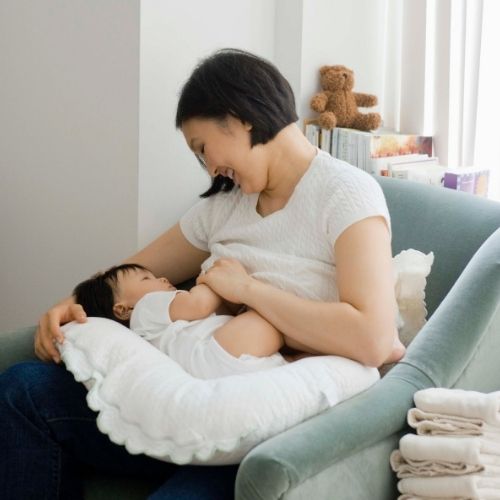
First 24-48 hours
The next bit of time is similar to the first 12-24 hours. You will continue to be monitored and assessed to make sure you are not bleeding excessively, developing postpartum preeclampsia, and are generally stable and healthy.
Heading Home
Congrats! You’ve graduated from the hospital and can go home.
A few things to remember for the first few days home:
- Keep ice on your bottom
- Continue using Dermoplast and Tuck’s pads (line them in your undies!)
- Take ibuprofen and acetaminophen as needed
- Rest as much as you can – you’ve been through a lot!
- Ask for help if you need it!
You should call your doctor with any:
- Fevers, chills, aches or feeling unwell
- Red, hot, streaky, painful breasts (could be a sign of mastitis)
- Bleeding through more than 1 pad per hour or passing clots larger than a golf ball
- Headaches, vision changes, pain in the upper belly, or high blood pressure (preeclampsia may develop up to 6 weeks after delivery)
My biggest piece of advice is to take any and all help offered! When someone asks what they can do, you can let them do your laundry, dishes, let you get a shower or nap, make you a meal, or let you sip a hot cup of coffee.
You get it! Take this time to soak up your little babe, bask in the glory of your new family, and recover!
What to Expect for Mom After a C-section
Immediate postpartum:
Great work, mom! C-sections are no easy feat, pat yourself on the back!
C-sections take between 1-2 hours. You will receive either a spinal or general anesthesia for your c-section.
Related: Totally Shocking C-Section Facts
A spinal is when medication is injected into your back and makes you numb from the ribs down. Your lower body will be like dead-weight, but you will be awake. This is the preferred way.
If your c-section is unplanned but you have an epidural, your anesthesia team may be able to push medication through your epidural to make you numb.
If you go under general anesthesia, you will be asleep, and your partner will not be present for delivery. This is most common if the baby needs to be born stat and there is not time to do a spinal.
A catheter will be placed into your bladder when you are good and numb, so you won’t be getting up to pee. Additionally, there will be compression stockings placed on your legs to prevent blood clots.
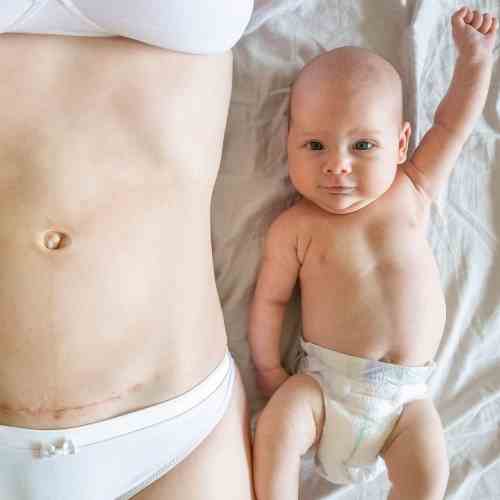
When baby is born after a c-section
Depending on your hospital will either stay in the operating room with you to be assessed or brought to a warmer room.
It’s hard to do delayed cord clamping in an operating room because the baby is cold and wet and it’s really hard to dry them on your sterile belly.
Believe it or not, the baby’s temperature is really important to their overall well-being! Babies that are cold have a hard time with their blood sugar levels, feeding, and maintaining overall good vital signs.
After the c-section, you will be taken to a recovery area where you can do some skin-to-skin, breastfeeding, and bonding. Your vital signs will be monitored (blood pressure and oxygen saturation), you should be on a telemetry (heart) monitor, and you will also receive those dreaded fundal massages.
Luckily, your numbing medication should still be wearing off and they hopefully won’t be as painful.
The type of dressing used to cover the incision is dependent on your provider. You can ask at your appointments how the dressing will be and how to care for it.
You’ll stay in recovery for about 2 hours, before you are moved to a postpartum area.
First 12-24 hours
There are quite a few similarities to a vaginal delivery, but there are a few differences as well.
Your vital signs will be assessed and your nurse should help manage your pain. You’ll likely need something stronger than just ibuprofen or acetaminophen, so many sure you communicate with your team about your pain level. In addition to cramping, your incision will be sore and tender. Many moms prefer loose clothing and high-waisted bottoms (click here to see what I recommend).
Additionally, you should take stool softeners! ASK FOR THEM IF THEY ARE NOT OFFERED, AND TAKE THEM IF THEY ARE!!
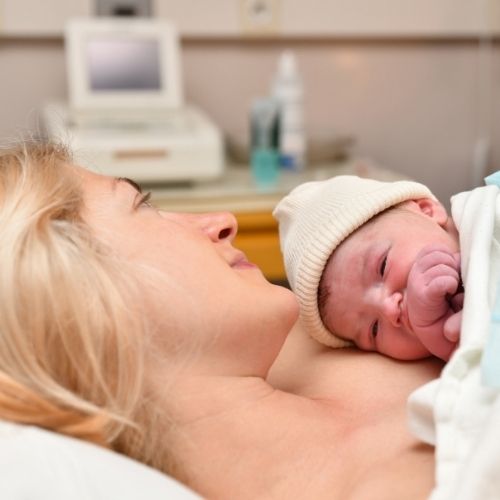
That first poop is WICKED after a c-section. Plus, the heavier pain medications can cause constipation. Drink your water, take your stool softeners, and get past that first poop.
Your nurse will continue checking your uterus, but not as aggressively as the fundal massage. You will bleed like you have a period for a few weeks, similar to a vaginal delivery.
You should wear an abdominal binder to help your belly heal! They can give a lot of support.
I said it once, I’ll say it again…TAKE CARE OF YOUR NIPPLES IF YOU ARE BREASTFEEDING! If they don’t hurt now, they probably will real soon! Motherlove nipple cream is my favorite because it:
- worked the best for me with each baby
- doesn’t need to be wiped away after each use
- I only needed a small amount for relief
- any leftovers are great for chapped lips/skin and diaper rashes
- its organic and safe to use

First 24-48 hours
Similar to above, except you should be able to walk and pee on your own now! Yay! Your catheter will be removed and you should pee on your own within 6-8 hours.
Walking is hard after a c-section. Go slow and easy! Wear your abdominal binder. Follow these tips for healing after a c-section.
Heading Home
Great work, mama! Take that baby and show him/her the world.
After your c-section:
- Wear your abdominal binder
- Care for the dressing as instructed
- Take your stool softeners
- Take ibuprofen and acetaminophen as needed
- Rest as much as you can – you’ve been through a lot!
- Ask for help if you need it!
- Take it slow with all exercise
Postpartum cesarean you should call your doctor with any:
- Excessive drainage at the incision
- Bleeding or separating at the incision
- A foul smell coming from incision
- Fevers, chills, achiness or feeling unwell
- Red, hot, streaky, painful breasts (could be a sign of mastitis)
- Bleeding through more than 1 pad per hour or passing clots larger than a golf ball
- Headaches, vision changes, pain in the upper belly, or high blood pressure (preeclampsia may develop up to 6 weeks after delivery)
If someone offers to help, let them. Especially if you have little ones at home! C-sections are a major surgery and you should heal and rest as much as you can. It may take a full8 weeks to feel normal again!

Dad/Other Mommy/Support Person’s Role
First, check out this post to learn how to be helpful during labor. Then, take this postpartum period as a time to really show how much you care about this mom and baby.
It doesn’t matter if you’re her husband, wife, boyfriend, girlfriend, ex, mother, father, brother, sister, cousin, friend, dog-groomer’s boyfriend’s aunt….just show her some love!
She is exhausted, overwhelmed, weak, excited, happy, sad, feeling all of her hormones shift. Her belly or vagina (or both) is aching, her uterus is cramping, and she needs help. Even if she tells you she’s fine.
- Take care of other children and pets
- Get mom WHATEVER she asks for. If it’s a 50-piece sushi platter, GET IT. A milkshake? YEP! Tuna salad sandwich with pickles and ketchup? Weird, but ok! My husband brought me a poke bole and a strawberry smoothie after birth and it’s still one of my favorite meals!
- Bring mom lots of water and snacks
- Carry baby to mom when he/she cries
- Make meals
- Clean up
- Start the laundry
- Mop the floors
- Clean the living room without her asking
- Make her these delicious oatmeal cups (if she’s breastfeeding – oatmeal may boost supply!) or these yummy oatmeal cookies (chocolate chip or white chocolate cranberry!!)
Ok, you get it. SPOIL HER TO DEATH! Her body just did some cRaZyYy stuff to bring you a baby, and she needs lots of TLC.
Your job is to be mom’s hands. And if the baby cries when she’s taking a shower, BY ALL MEANS, unless it is an actual TRUE emergency, do not tell her or bring her the baby.
Let mama shower. Always. let. mama. shower.
You may also like:
Epidural Myths: Get the facts!
The Honest Truth About Postpartum
What I Love and Hate About My Postpartum Body
Baby Blues vs. Postpartum Depression and Anxiety
Mamas, it is so normal to have a wild range of emotions after baby is born. You may think “how could anyone feel sad, it’s such a happy time!” But it is so. normal.
Baby blues refers to the mood swings many moms face after baby is born. You’ve been through a lot, your life has been drastically changed, and your hormones are a MESS. You may be happy one moment, sad the next, proud, then exhausted. Laughing and crying. The combinations are endless.
Postpartum depression is characterized by:
- Feeling sad, hopeless, worthless or lonely
- Feeling like you aren’t bonding with baby
- Loss of appetite
- Insomnia
- Feeling like you can’t take care of yourself or baby
- Anxiety and panic attacks
- Feeling overwhelmed and sad
Baby blues typically goes away within a few weeks of delivery, whereas post partum depression may last much longer. Call your doctor if you are experiencing any of these symptoms. It can be treated and you are not alone.
With my last baby, I literally cried every night from 4-8pm about EVERYTHING. It lasted about 2 weeks. I cried because…she was so cute…she was changing so quickly…did my first baby still love me enough…what if something bad happened to me in childbirth…did the dog still feel loved…how could I make someone so cute…OMG is she really real
Etc. etc….you name it, I had overwhelming emotions about it!
PARTNERS: Here is how you can help with postpartum depression.
Please call the Substance Abuse and Mental Health Services Administration Hotline at 1-800-662-HELP (4357) if you or someone you know is experiencing a crisis. Please keep your medical team informed if you experience any of the above symptoms.
OMG—that was so much info! If you made it to the end, you are super duper prepared. Great work!
If you haven’t already, follow me on Pinterest, Facebook and Instagram. And don’t forget to subscribe to my newsletter!! I promise not to spam you (I hate spam, too!)
Was there anything I missed? Was anything confusing?? Please let me know in the comments! I LOVE hearing from you, and it’s super important to me that the message is clear! <3
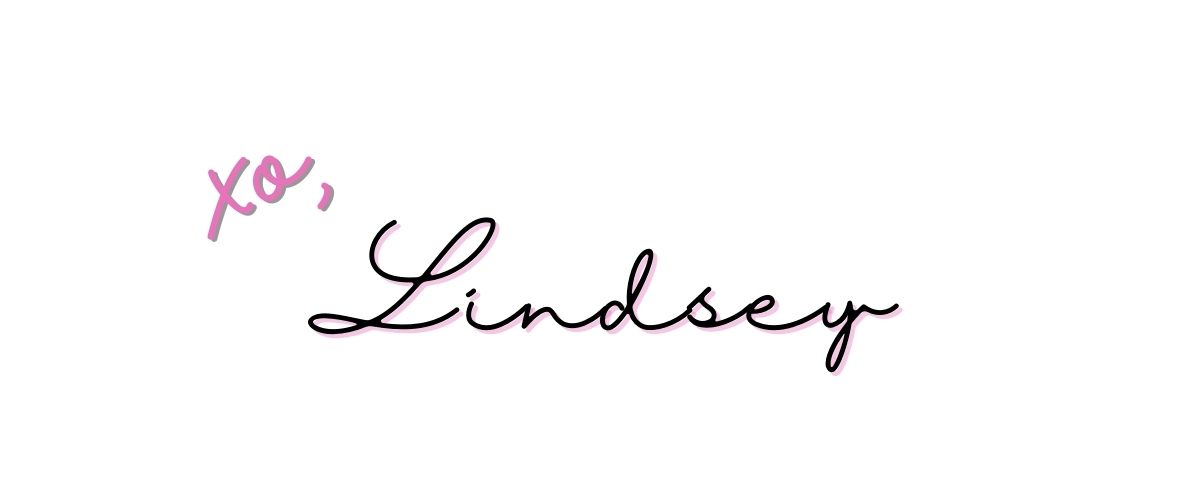
Please note: The views on this website are personal opinions only and do not represent the opinions or policies of any provider or institution that I am affiliated with. This information is not medical advice. Information on this website is not intended to diagnose, or treat any form of any disease. This article is for informational and entertainment purposes only. You should always refer to your own medical provider when making medical decisions for yourself and/or your baby. Please refer to my Terms and Conditions for more information

